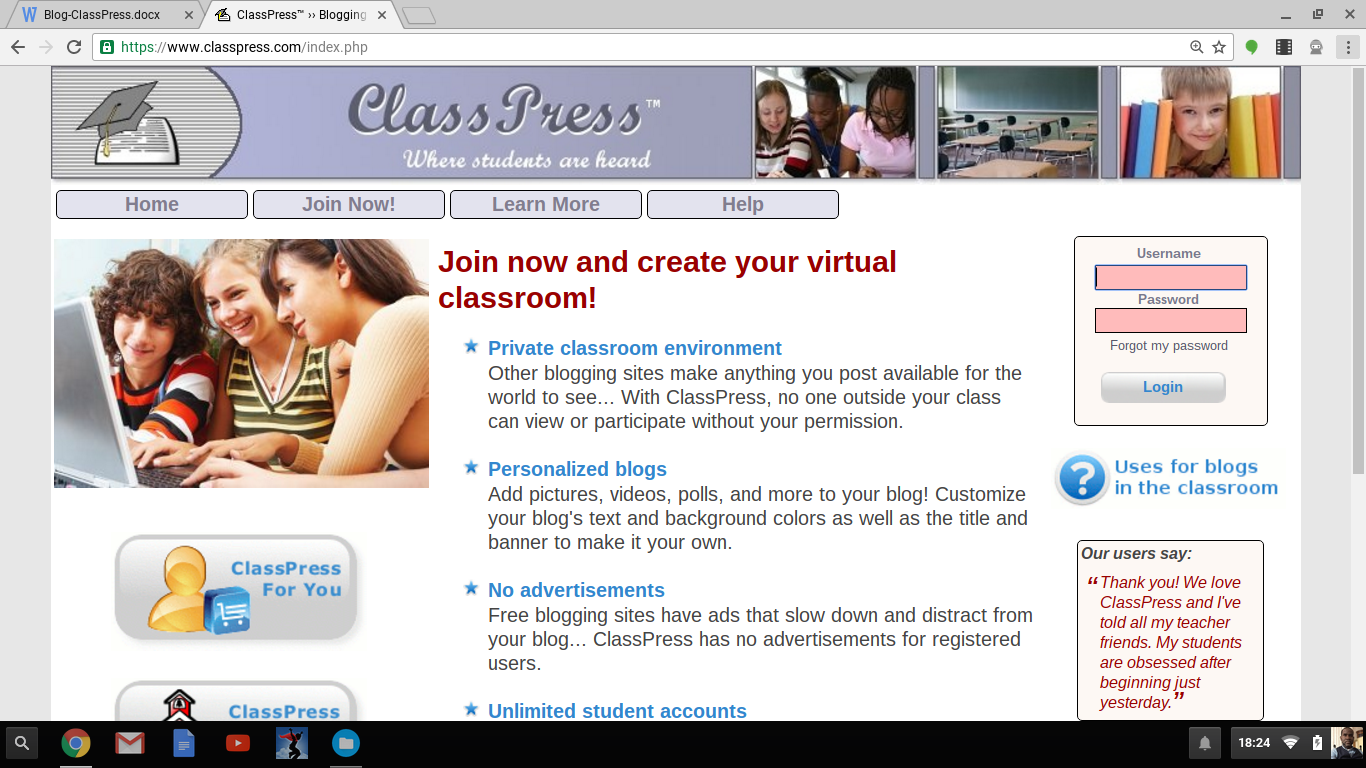Students Build a Blog
Introduction to Student Blogging
Class Press is a blogging platform that I have tried with students for the first time as of Wednesday. I found it after a google search because of the reality that technology is not going anywhere and I wanted to integrate technology into my ELA classroom in a new way. After having begun to blog as an educator, I quickly understood the relevance and value that blogging had. My first blog post happened in May and I’d learned about the whole blogging thing through interactions with other educators via Voxer and Twitter. Users of Class Press can add pictures, video (for example, from YouTube), polls as well as special effects to accompany their blog posts.

Personalizing Blog Pages
Within the Class Press site, students can personalize their blog page with an avatar, a color scheme for the background, titles and body of text, as well as a banner along the top and the ability to name the blog page. Many students have developed themes associated with their likes and interests. Just as student writing can reflect the individual who wrote it in unique ways, it is interesting to see how these personalized pages are reflective of the personalities I have come to know.

Commenting on Posts
On the day of introduction, students were very eager to learn about the ins and outs of the blog site. In fact, the idea of a blog was motivating by itself. In many ways, students have become so accustomed to writing in the traditional sense, that they were intrigued by the idea to have their writing be reflected in a different way. An integral feature of the blog site is that students can "be heard" through their own blog posts, and also have the ability to "be heard" through the comments, questions and feedback on other students' blog posts. It is important to note that students must be introduced to ways of responding to a post and also responding in an appropriate manner. I have used student examples, with their permission as an impetus to draw traffic to their blogs as well as highlight phenomenal work.
Initially many students started posting short, choppy, random thoughts and ideas. Perhaps they were unsure of how to proceed. I allowed this to occur because there is much to be said for discovery and the construction of knowledge. As we continue to move forward in the year and they are able to interact with each other through this site, they are able to learn of the variety of approaches to writing, read others' comments through a perpetual learning process.
Educator Blog – Student Blogging – Community of Learners
Building Community
One of things I had not considered was the impact that introducing blogging to the students in my Grade 4-5 ELA class would have on student motivation. What a breath of fresh air to see how students began to learn about each other, compliment each other and be able to see the strengths and talents that others bring to the table. I listened to the oral conversation with students as well as the written exchange through the Class Press site and made an interesting find...students enjoy interacting with one another, as well as interacting with the teacher in a forum, if you will, of a different kind. They know that this can act as an extension of the classroom and that often I will respond to their posts, which would serve as continued motivation and even validation for them.
An additional aspect of the site is that educators who use it are able to connect with other educators, despite their geographic location, to become "buddies." As a result of this, students in both classes would be able to comment and respond to eahc other as a means to globally connect teachers and learners, as well as continue to grow through the feedback students are able to give and receive.
Reflections
All in all, I can say that this site was very easily integrated into my ELA teaching and learning, as an alternative to traditional methods. No, it does not completely relieve students of the responsibility to write manually, but it does involve them in the use of technology as well as affirms the reading and writing processes. Students can always edit and revise their responses after they have been approved for posting by me, which reinforces steps three and four of the writing process. Also, a PDF document can be printed to contain a typed record or log of student blog posts.
I will continue to use Class Press for the following purposes:
1. Student responses to reading (Students can provide summaries and reflections on their reading as they read for a variety of purposes and from a variety of genres. They are sharing their knowledge, using reading skills and growing as readers and writers.)
2. Responses to Guiding Questions (Guiding questions are used to frame the day and as such, students can respond to these guiding questions as a review of the day's learning.)
3. Student sharing of personal writing or thoughts (Students can share with me and their peers any personal writing or thoughts they have about life, current events or a random topic of choice.)
4. Flipped Classroom (Based on its potential, I can post links to a video or audio that I may create through the "ShowMe" application on the iPad or using "Explain Everything," another great iPad application, and students can respond to it, by placing their thoughts, comments, epiphanies or questions on their blog page.)
Class Press is definitely worth looking into as we seek to be progressive educators.
